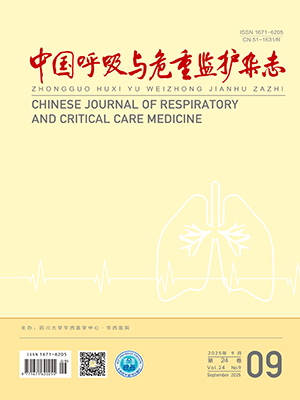Objective To study the effects of two different tidal volume mechanical ventilation on lipopolysaccharide( LPS) -induced acute lung injury( ALI) , and explore the effects of glutamine on ALI.Methods Thirty male Sprague-Dawley rats were randomly divided into three groups. After anesthesia and tracheotomy were performed, the rats were challenged with intratracheal LPS ( 5mg/kg) and received ventilation for 4 hours with small animal ventilator. Group A received conventional tidal volume, while group
B received large tidal volume. Group C received large tidal volume as well, with glutamine injected intravenously 1 hour before ventilation. Arterial blood gases were measured every one hour. 4 hours later, the rats were killed by carotid artery bleeding. The total lung wetweightwas measured and lung coefficient ( total lung wet weight /body weight ×100) was counted. WBCs and neutrophils in BALF were counted. Protein concentration, TNF-α, IL-6, and cytokine-induced neutrophil chemoattractant-1 ( CINC-1) levels in BALF,myeloperoxidase ( MPO) , and superoxide dismutase ( SOD) levels in the lung were assayed respectively.Results PaO2 and SOD levels decreased more significantly in group B than those of group A. The lung coefficient, WBCs, neutrophils, protein, TNF-α, IL-6, and CINC-1 levels in BALF, MPO levels in lung increased more significantly in group B than those of group A. PaO2 and SOD levels were significantly higher in group C than those of group B. The lung coefficient, WBCs, neutrophils, protein, TNF-α, IL-6, and CINC-1 levels in BALF,MPO levels in lung were significantly lower in group C than those of group B. Conclusion Large tidal volume mechanical ventilation aggravates LPS-induced ALI, and glutamine has obviously
protective effects.
Citation: LI Jinming,SUN Baojun,YU Senyang,LIU Qinghui.. Large Tidal Volume Mechanical Ventilation Aggravates Acute Lung Injury and Protective Effects of Glutamine. Chinese Journal of Respiratory and Critical Care Medicine, 2010, 9(2): 168-171. doi: Copy
Copyright © the editorial department of Chinese Journal of Respiratory and Critical Care Medicine of West China Medical Publisher. All rights reserved




